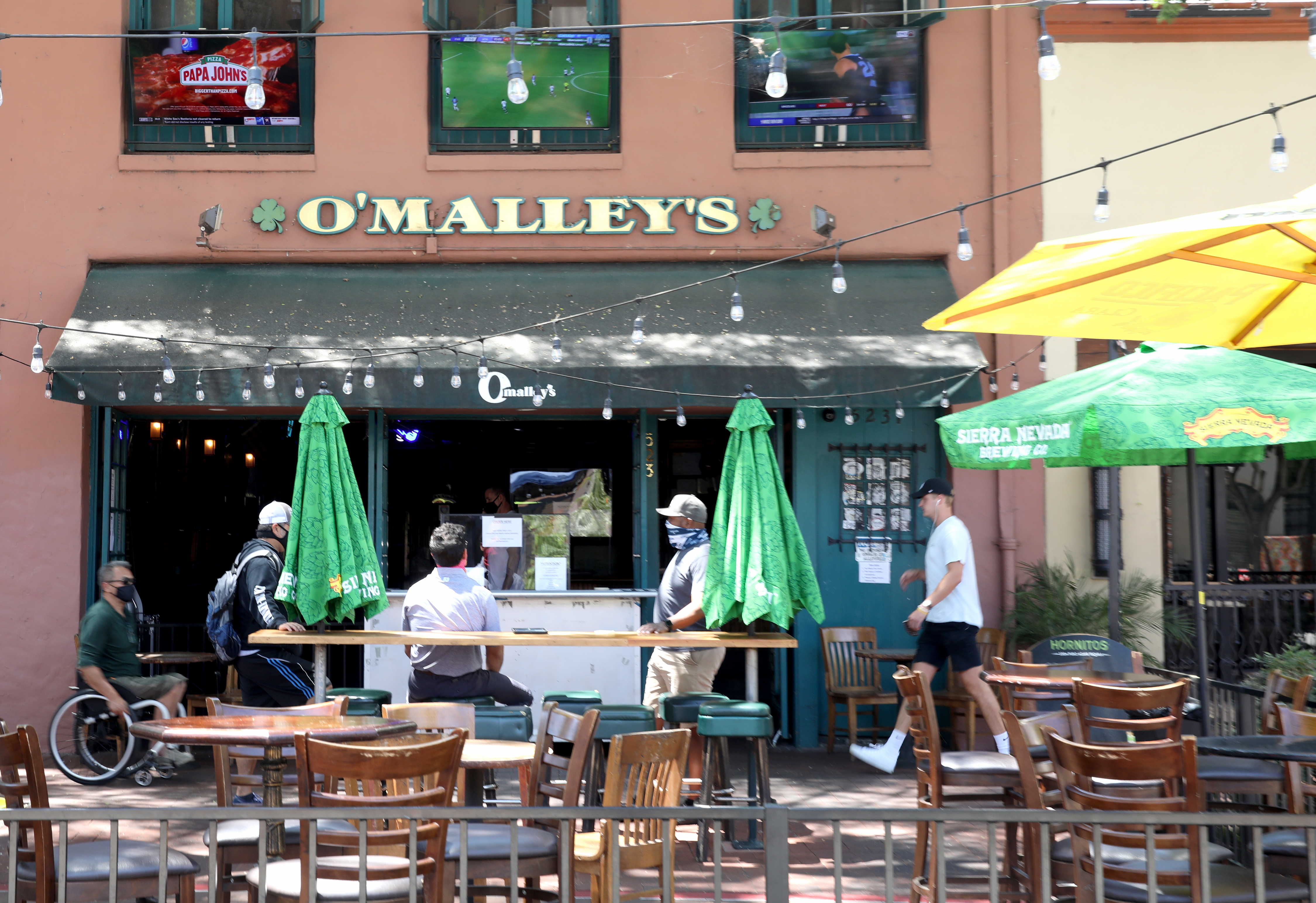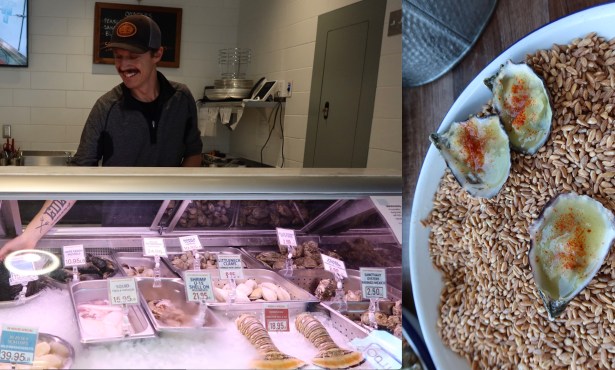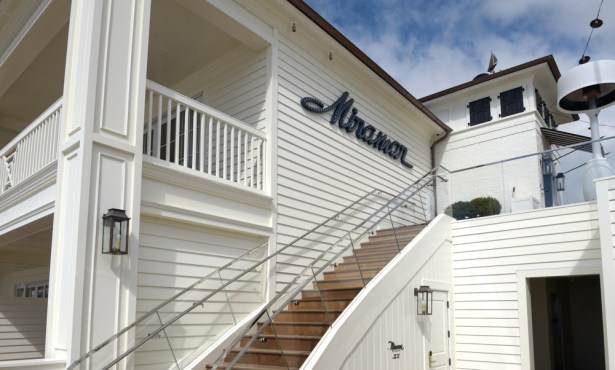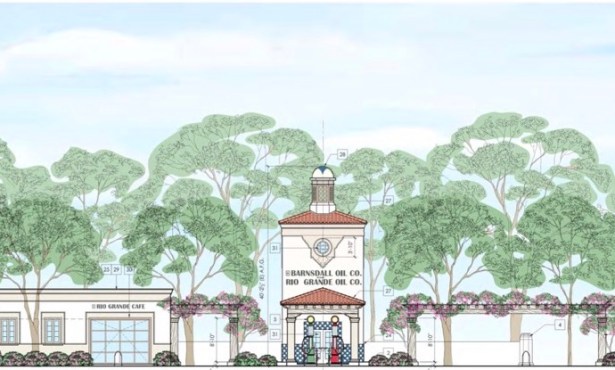Taking the Pulse of State Street’s Pedestrian Promenade
Santa Barbara Chapter of the American Institute of Architects’ Survey Finds Car-Free Zone a Big Hit

In what will come as a big surprise to absolutely nobody, 85 percent of the 4,764 people who filled out an online survey about the future of Santa Barbara’s State Street said the pedestrian promenade — that stretch of State Street between Haley and Sola Street that’s been blocked to traffic since May — should either stay the way it is or be expanded. Only 4.5 percent of the respondents said traffic should be returned to State Street, and nearly 8 percent said the car-free zone should be reduced in size.
Of those favoring the new regime — in which pedestrians, bike riders, restaurants, and bars share the street-scape — 46.5 percent said the promenade boundaries should stay as they are, and nearly 39 percent said they should be expanded. There was less agreement over what access bike riders should be afforded should the promenade be allowed to continue: 56.3 percent said cyclists and pedestrians should share the space; 35 percent said only pedestrians should be allowed; less than 3 percent said cyclists only.
The survey was conducted by the Santa Barbara Chapter of the American Institute of Architects (AIA), whose members — at least 173 of them — are currently in the throes of an extended collective re-imagination exercise known affectionately to those in the trade as a “charette” to architecturally reconfigure the DNA of downtown. The survey was designed to dovetail into that exploration. Of the 4,764 respondents, 98 percent lived in the South Coast, 76 percent lived within city limits, and 31 percent either lived or worked downtown. The vast majority of the respondents replied to the questionnaire offered in English; just 12 responded to the Spanish version.
Get the top stories in your inbox by signing up for our daily newsletter, Indy Today.
The purpose of the charette and the survey is to help fix what’s been ailing downtown long before the COVID pandemic made matters even worse: empty storefronts, the collapse of retail, lack of mojo, and generalized lethargy, torpor, indifference, and ennui. The survey asked respondents what they wanted to see downtown long term; 94 percent said dining, 91 percent said music, 88 percent said places to sit (benches have been quietly but strategically removed to eliminate resting places for homeless people to congregate), 84 percent said art, and 63 percent said food trucks. (While technically food trucks have not been banned, the Santa Barbara City Council adopted enough restrictions on time and place of operations that they might as well have.)
All that, however, are accent notes on the main attraction long advocated by members of the AIA: housing. Only by allowing a large number of housing units downtown, they’ve argued in the past, can City Hall create the critical mass of warm bodies with cash to spend to keep the central business district afloat. The first big wrinkle, of course, is where will these new downtown residents park? The second is whether it’s possible to build enough units to be financially viable — given the exorbitant cost of downtown real estate — without exploding Santa Barbara’s carefully cultivated sense of space and place.
Of the respondents, 64 percent said they thought there should be more housing downtown, 17 percent opposed the idea, and nearly 20 percent were undecided. The $64 million question in all this is how high buildings should be allowed to go. Of the respondents, 54 percent said three stories, 28.6 percent said four stories, and 12 percent said five.
As to parking, 64 percent of the respondents said they’d need parking near their home if they lived downtown. Of those, 91 percent said they’d be willing to pay extra to have a parking space in their building, and 22 percent said they’d be willing to make arrangements elsewhere.
The new magic word in planning discussions about re-arranging the furniture of State Street is “decoupling,” a new paradigm in which parking is seen as an optional extra amenity but not an essential ingredient in any housing package. The virtue of decoupling is that it frees up space for housing that otherwise would go to one’s car and allows for more dwelling units per acre.
The question remains: What do people do with their cars? Public parking lots are seen as an attractive solution; with downtown vacancies so high, many public lots operate at considerably less than full capacity. And at night, when the shops are closed, these lots are mostly wide open. Some longtime businesspeople have questioned how many of those parking spaces will remain available if and when downtown becomes more vital. As for the public parking spaces, they point out, those were built for shoppers. They worry about possible competition for parking between shoppers and the new downtown residents.
In the meantime, 173 architects are laboring away on their new plans for downtown. There are 16 teams of eight architects each; most have been assigned two-block stretches, but a few of the teams have been charged with conjuring up new plans for the whole downtown. The results of their efforts will be made public next month.
Every day, the staff of the Santa Barbara Independent works hard to sort out truth from rumor and keep you informed of what’s happening across the entire Santa Barbara community. Now there’s a way to directly enable these efforts. Support the Independent by making a direct contribution or with a subscription to Indy+.



